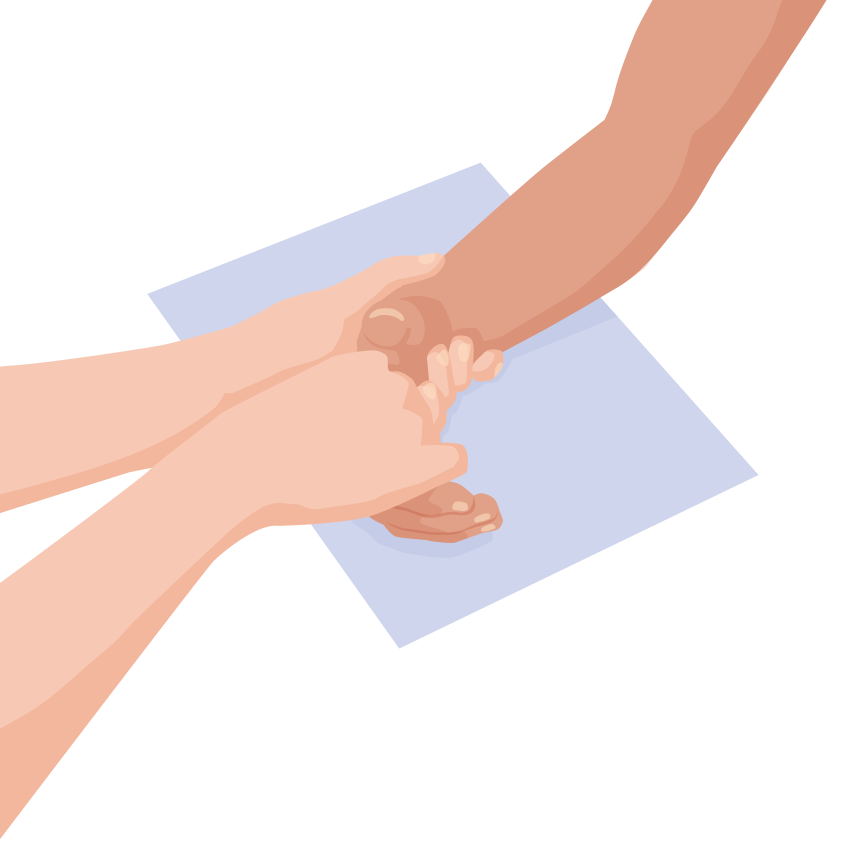Types of movements/exercises
Individual and functional movements
Muscles produce movement,
movements can be defined as:
- Individual – movements using one specific muscle or group of muscles or body part
- Functional – movements that use more than one muscle, group of muscles or body part at once and replicate movements performed in everyday life
![]() Question
Question
Which of these are individual movements?
Select all that apply.
- a. Knee extension

- b. person getting up from chair

- c. shoulder abduction

- d. Person brushing teeth

If you selected a and c, you are correct.
These movements require only one muscle group and do not replicate a movement performed in everyday life. Options b. and d. are examples of functional movements performed regularly in everyday life and using multiple
muscle groups.
Both individual and functional movement are useful for strengthening muscles. As a person becomes stronger, functional movements may be more practical for them to perform for greater improvements in muscle strength.
Note: A movement can be an exercise when it is repeated and aims to improve or maintain muscle strength, endurance mobility or function.
Passive, active-assisted and active movements
When performing muscle strengthening exercises, movements are classified as passive, active-assisted or active.
Passive movement: Refers to any movement where another person performs the movement for the person.
- Benefits: prevent stiffness, increase range of motion, increase circulation, decrease swelling and stimulate neural pathways

![]() Question
Question

Remember Nguyen?
Nguyen is president of her local community group that helps prepare meals for homeless people.
Immediately after experiencing a stroke, Nguyen could not move her left arm at all. When the clinician tried to lift it for her, Nguyen had full movement and was in no pain.
Is this an example of passive, active-assisted or active movement?
- a. Active-assisted movement
- b. Active movement
- c. Passive movement
If you selected c, you are correct.
As Nguyen was not able to move her left arm herself, passive movement is being performed when the clinician moved her left arm for her. Passive movement can be helpful to stimulate motor pathways, regain movements and maintain movement.
Active-assisted
movement:
Refers to any movement that is performed partly by the person, with assistance from another person, object or another body part.
- Benefits: allows person to perform movements that replicate everyday activities when they do not have enough strength to do so independently
![]() Question
Question

Remember Farah?
After falling and fracturing her wrist 7 weeks ago, Farah is having some trouble moving her wrist after taking it out of the cast.
She is able to perform small amounts of wrist flexion and wrist extension independently when asked, but is limited due to pain and weakness. When you assist her through the movement by holding her hand and wrist, she is in less pain and is able to achieve a greater range of movement in wrist flexion and extension.
Is this an example of passive, active-assisted or active movement?
- a. Passive movement
- b. Active-assisted movement
- c. Active movement
If you selected b, you are correct.
This is an example of active-assisted movement. Farah is able to perform the movements with assistance. After experiencing an injury such as a fracture, often active-assisted movement can be helpful to regain muscle strength and regain or maintain movement in the joint.
Active movement:
Any movement that is performed independently by the person.
- Benefits: allows people to perform movements that replicate everyday activities
![]() Question
Question

Remember Julie?
Julie has osteoarthritis in both knees. When visiting you, she says she has knee pain when getting up out of her chair. You ask Julie to demonstrate how she gets up out of the chair. Julie is able to perform this movement independently, however states that she has some discomfort around both of her knees.
Is this an example of passive, active-assisted or active movement?
- a. Passive movement
- b. Active-assisted movement
- c. Active movement
If you selected c, you are correct.
As Julie is able to get up out of her chair independently, this is an example of active movement. Despite having some discomfort when performing the movement, Julie’s muscles are strong enough to perform the movement independently. Active movement can be performed with or without assistive technology.
You will learn more about which movements are indicated for each grade of strength assessed in lesson 3.
